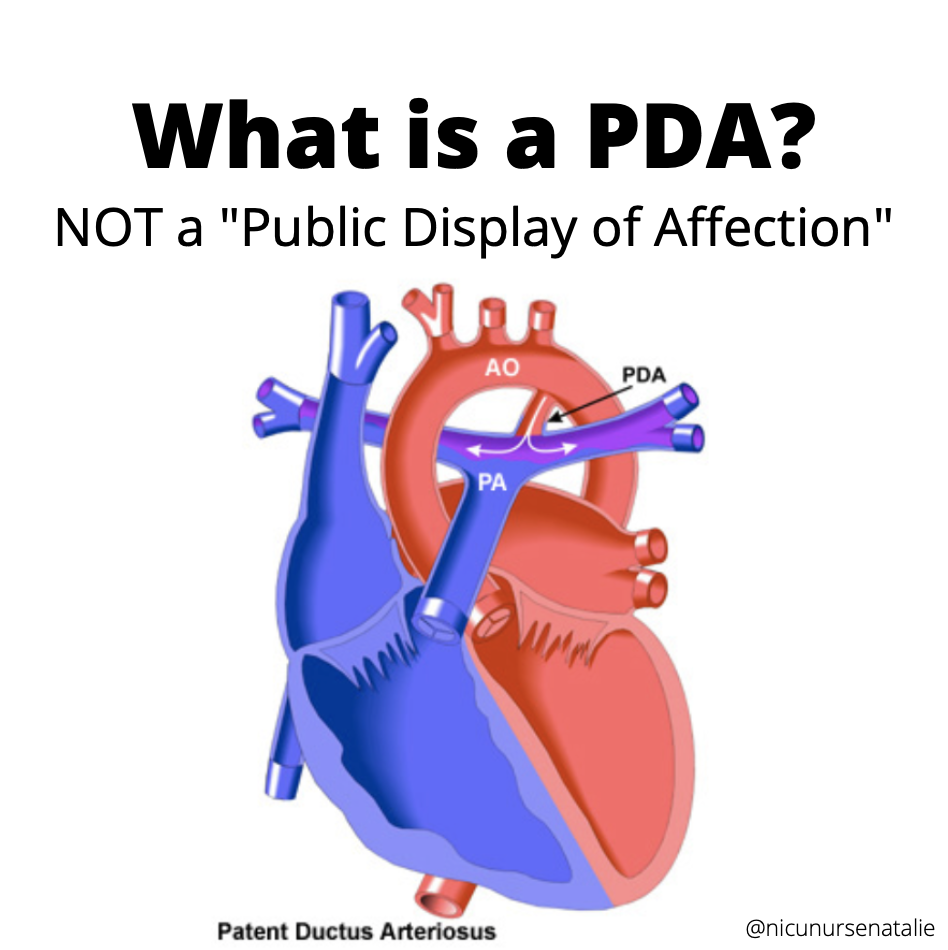What is a PDA?
In short, a patent ductus arteriosus is the vessel that connects the aorta to the pulmonary artery. This vessel is necessary to support the fetal circulation while in utero. It is termed a PDA when it remains open later than the newborn period. The persistence of the PDA after birth may cause difficulties depending on its size, and the magnitude and direction of blood shunting through the PDA will depend on pulmonary and systemic vascular resistance.
Because the pressure is higher in the aorta than the pulmonary arteries, this causes excess pulmonary blood flow. In some congenital heart defects (e.g. tricuspid atresia, TGA, HLHS) it is actually beneficial and imperative to maintain the PDA as it allows the necessary mixing of blood to sustain life prior to surgery. This is achieved through medications such as prostaglandin (PGE).
In term infants:
The flow of blood through the PDA allows blood to flow from the left to right, increasing pulmonary blood flow. High pulmonary blood flow causes increased pulmonary vascular resistance, pulmonary hypertension, and right ventricular hypertrophy.
In preterm infants:
The ductus arteriosus in utero is not as responsive to an increased oxygen environment and does not close after birth. That’s because the smooth muscle of the heart has a diminished response to oxygen. Decreased pulmonary resistance causes blood to shunt from left to right and reenter pulmonary circulation. This leads to increased pulmonary congestion, decreased lung compliance and stiff lungs. The baby may have trouble with weaning from ventilator support.
Clinical manifestations of a PDA:
Increased WOB
RDS
Moist lung sounds
Murmur
Tachypnea and/or tachycardia
CBG that indicates metabolic acidosis due to decreased cardiac output and tissue perfusion
Treatment:
CPAP to increase pressure on the lungs
Diuretics to decrease pulmonary congestion
Tylenol to work against the body’s natural prostaglandins to close the PDA
Surgical ligation if pharmaceutical treatment does not work or is contraindicated (renal disease)
